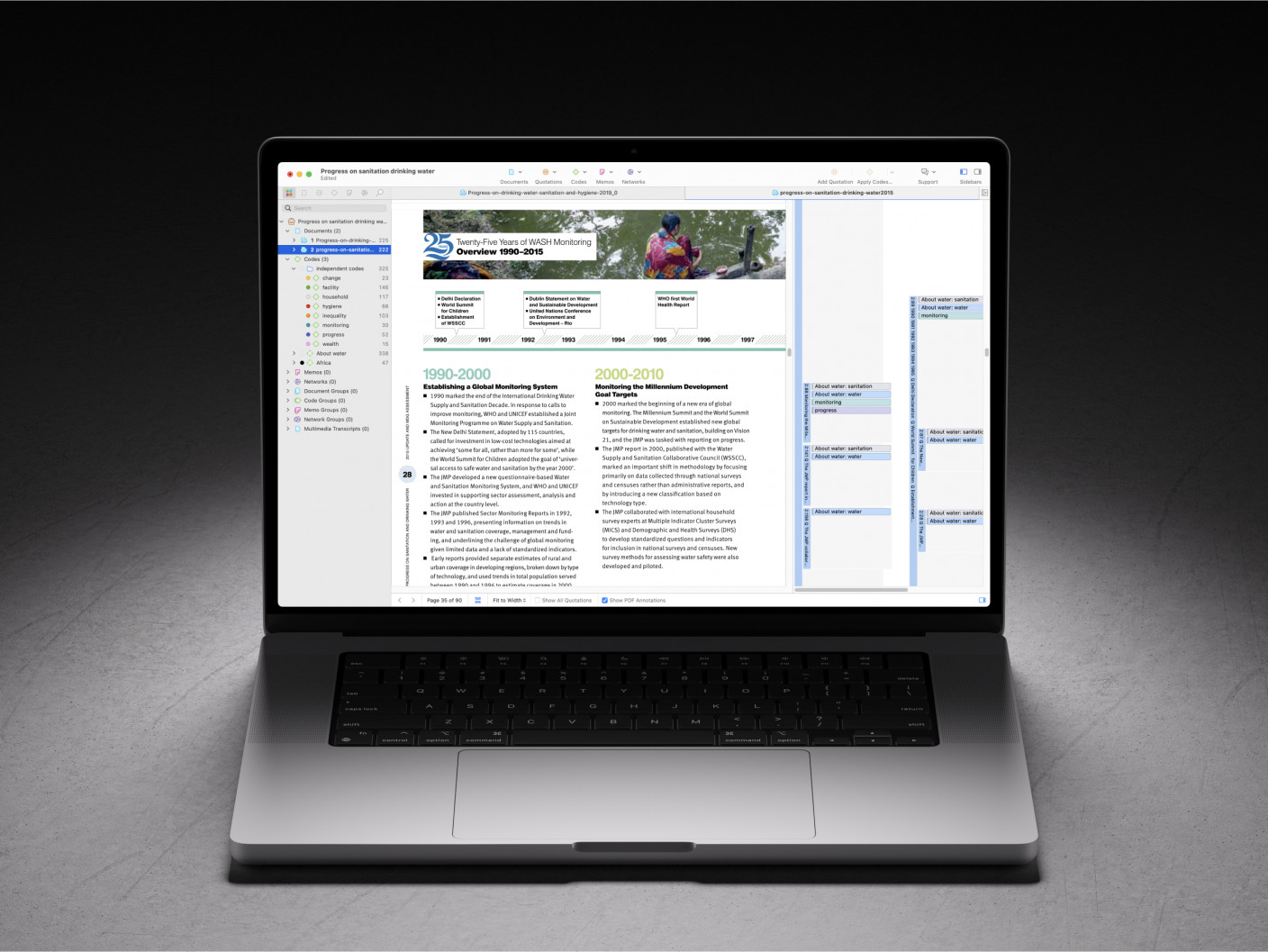Genre Analysis | Methods, Techniques & Application
- Introduction
- What is genre analysis?
- What are the aims of genre analysis?
- What are the features of genre analysis?
- How do you conduct a genre analysis?
Introduction
Genre analysis is a method in qualitative research that examines the conventions and structures of different types of texts within specific contexts. It allows social science researchers to understand how language and format shape communication and meaning in various social and cultural settings. By analyzing the patterns and features of texts, genre analysis helps uncover how information is organized and presented to achieve certain purposes. This approach is particularly useful in fields such as linguistics, communication studies, and education, where understanding textual conventions is important. The following sections cover the fundamentals of genre analysis, including its definition, objectives, key characteristics, and the steps involved in conducting it.

What is genre analysis?
Genre analysis is a research method that examines the structures and conventions of different types of texts within specific contexts. It aims to identify the patterns and features that characterize a particular genre, such as academic writing, TV news reports, or social media posts, in helping to convey meaning. By studying these elements, researchers gain insights into how texts communicate meaning and achieve their purposes within a community or culture.
At its core, genre analysis looks at both the form and content of texts. It considers aspects like language use, organization, writing process, and rhetorical strategies typical of a genre. This method also takes into account the social and cultural factors that influence how genres are created and interpreted. By doing so, it sheds light on how communication practices, personal experience, and knowledge are shaped by the expectations and norms of specific groups.
A key aspect of genre analysis is the relationship between texts and their contexts. Genres are not just collections of similar texts; they are dynamic and evolve over time in response to changes in society, technology, and communication needs. This means that genre analysis often involves studying how genres develop and transform, as well as how they maintain stability.
Another important element is the focus on the purposes that genres serve. Different genres exist to fulfill specific functions, such as informing, persuading, or entertaining. Understanding these purposes helps researchers interpret the choices that writers make in constructing their texts, including decisions about vocabulary, tone, structure, and other stylistic features.
In practice, genre analysis often involves collecting a group of texts belonging to a particular genre and analyzing them for common features. This might include examining grammatical structures, vocabulary usage, and typical organizational patterns. Researchers may also consider the expectations of the target audience and how those expectations influence the way texts are written.
Genre analysis recognizes that genres are specific to their rhetorical situation. They are shaped by and help shape the communities in which they are used. For example, the genre of scientific research articles has developed specific conventions to facilitate the communication of findings among scientists. Understanding these conventions is essential for anyone wishing to participate in that community.
This method is widely used in fields like linguistics, discourse studies, and professional communication. In education, it can help teachers develop curricula that improve students' writing skills by familiarizing them with the conventions of various genres. In professional settings, understanding genre conventions can enhance effective communication within and between organizations.
By studying genres, researchers can also uncover power dynamics and ideological assumptions embedded within texts. Genres can reinforce certain values and norms, and genre analysis can reveal how these are perpetuated through language and structure. This makes genre analysis a valuable method not only for understanding communication but also for critiquing and potentially transforming it.
Overall, genre analysis provides a systematic way to study texts by focusing on the patterns and conventions that define them. It allows researchers to explore how language and structure are used to achieve specific goals within particular contexts. By examining these aspects, genre analysis contributes to a deeper understanding of communication practices across different domains.
What are the aims of genre analysis?
The primary aim of genre analysis is to understand how different types of texts function within specific social and cultural contexts. By examining the structures, language features, and conventions of a particular genre, researchers seek to understand how meaning is constructed and communicated. This involves identifying patterns and regularities that characterize the genre, which helps in distinguishing it from others.
One key objective is to explore the relationship between the text or communicative event and its purpose. Genre analysis looks at how texts are designed to achieve specific goals, such as informing, persuading, or entertaining the audience. By understanding these purposes, researchers can analyze how writers make choices about language, tone, and structure to effectively communicate with their intended readers.
Another aim is to investigate how genres evolve over time. As societies change, so do the communication needs and expectations of their members. Genre analysis examines how new genres emerge and existing ones adapt in response to shifts in technology, culture, and social practices. This helps in understanding the dynamic nature of communication and the factors that influence it.
Genre analysis also seeks to reveal the underlying social norms and values embedded within texts. By studying the conventions of a genre, researchers can identify how certain ideologies are reinforced or challenged. This can provide insights into power dynamics and the ways in which language contributes to the maintenance or transformation of social structures.
In educational settings, one of the aims is to enhance literacy and communication skills. By teaching students about genre conventions, educators can help them become more effective writers and readers. Understanding genres enables students to better comprehend the expectations of different types of texts and to produce work that meets those expectations.
In professional and organizational contexts, genre analysis aims to improve communication efficiency. By understanding the specific genres used within a field—such as reports, emails, or proposals—professionals can craft their messages more effectively. This can lead to better collaboration, clearer information exchange, and more successful outcomes in business or institutional environments.
Another important aim is to facilitate cross-cultural understanding. Genres can vary significantly between different cultures or language communities. By analyzing these differences, researchers and practitioners can develop strategies to overcome communication barriers, which is particularly valuable in international or multicultural contexts.
Overall, the aims of genre analysis are centered on dissecting how texts function to achieve their purposes within particular contexts. By doing so, it contributes to a deeper understanding of communication practices, supports the development of effective communication skills, and provides tools for critical analysis of texts and their societal roles.
What are the features of genre analysis?
Genre analysis involves examining texts to understand the conventions and structures that define different genres. This approach focuses on several key features that help researchers identify how texts are constructed and how they function within specific contexts. The following subsections outline the main features of genre analysis.
Analysis of structural and linguistic elements
One of the primary features of genre analysis is the examination of structural and linguistic elements within texts. This includes analyzing the organization, format, and language used in a genre. Researchers look at how texts are structured, such as the typical sections in a research paper or the narrative arc in a novel. They also study language features like vocabulary, grammar, and rhetorical devices that are characteristic of the genre. By identifying these elements, genre analysis reveals how writers construct their texts to meet the expectations of the genre.
Consideration of social and cultural context
Genre analysis also emphasizes the importance of social and cultural contexts in shaping genres. Texts are not created in a vacuum; they are influenced by the norms, values, and practices of the communities in which they are produced. Researchers examine how cultural factors affect the development and interpretation of genres. This includes understanding the historical background, societal roles, and cultural significance of certain genres. By considering these contexts, genre analysis provides insights into why genres have particular features and how they function within a society.
Focus on purpose and communicative function
Another key feature of genre analysis is the focus on the purposes that genres serve. Each genre exists to fulfill specific communicative functions, such as informing, persuading, instructing, or entertaining. Genre analysis explores how texts are designed to achieve these purposes effectively. This involves studying how writers use language and structure to engage their audience and accomplish their goals. By understanding the intended functions of a genre, researchers can better interpret the choices made in the construction of texts and how these choices impact the audience.

How do you conduct a genre analysis?
Conducting a genre analysis involves a systematic examination of texts to understand the distinctive features and functions of a particular genre. The process begins by selecting the specific genre to study, which could range from academic essays to social media posts. After choosing the genre, gather a representative sample of texts that capture the variety within it. Collecting diverse examples helps ensure a holistic understanding of the genre's characteristics.
Next, analyze the structural elements of the texts. Observe how information is organized, noting common sections, headings, and overall layout. Identifying patterns in structure reveals how the genre typically presents content to achieve its purpose. For instance, research articles often follow a standard format that includes an abstract, introduction, methodology, results, and discussion. Recognizing these structural conventions aids in understanding how the genre communicates effectively with its audience.
Examine the language used within the texts by focusing on vocabulary, sentence structure, and tone. Determine whether the texts employ technical terms, formal language, or colloquial expressions. Consider the level of complexity in the sentences and the use of rhetorical devices. This linguistic analysis sheds light on how language is tailored to engage the audience and convey messages appropriately within the genre.
Reflect on the social and cultural context in which the genre operates. Think about the intended audience and their expectations, as well as the purpose of the texts—whether to inform, persuade, instruct, or entertain. Understanding the context helps explain why certain structural and linguistic features are present. For example, instructional manuals use clear, concise language and step-by-step structures to effectively guide users.
Identify recurring themes and conventions across the sample texts. Look for consistent stylistic choices, organizational patterns, or thematic elements that define the genre. Recognizing these patterns is useful for understanding how the genre maintains its identity and fulfills the needs of its audience. For example, opinion editorials often feature a clear stance on an issue, supported by persuasive arguments and evidence.
Finally, synthesize the insights gained from the analysis. Summarize the key features that characterize the genre and consider how these elements contribute to its function within the specific context. This understanding allows for a deeper appreciation of how texts within the genre are constructed and how they effectively communicate their intended messages.
By systematically examining structural elements, language use, context, and recurring conventions, a genre analysis reveals the underlying mechanisms that make a genre effective. This method provides valuable insights into the ways in which different genres shape communication and influence the interpretation of texts within various social and cultural settings.




